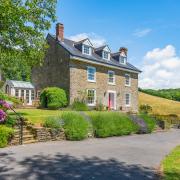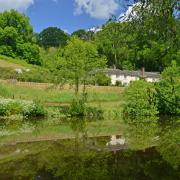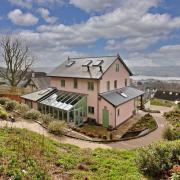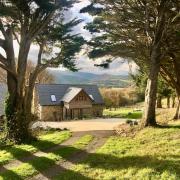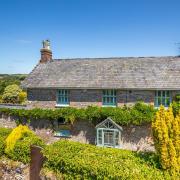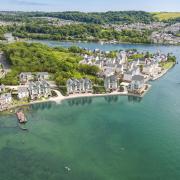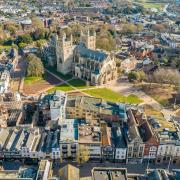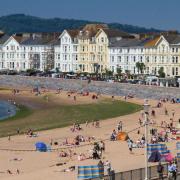The dream of selling up and heading to Devon to live is increasingly turning to reality for many homeowners in the South East as the effects of the COVID pandemic prompt a change in perspective. But before you take the plunge, what are the pitfalls you should consider to ensure the dream does not turn into a nightmare? I spoke to one expert to discover his 11 top tips for making your plans work
Perry Mears is used to hearing about the “project”. It’s often what clients say to him when they knock on his door to start the process of creating their dream home. It could be a Grand Designs-style new build from scratch, conversion of a rural barn into a modern property or creating an annexe in which the ubiquitous working from home will be much easier…whatever the idea, it often gets branded the same way.
“Clients tend to talk about their ‘project’ when they first contact me,” explains Perry, a leading South West-based architect who is often the first port of call for those wanting to create their perfect property in the region. “Clearly, not only are they often investing a lot financially in their plan, but they are emotionally too.”
Perry’s understanding of those twin ‘investments’ has been pivotal to his practice’s success over the years. And that success came before COVID-19 impacted so many more people’s plans and the dream of moving west became much more of a reality for them.
Indeed, Perry now finds that almost half of the inquiries he is receiving are coming from those who are looking to launch self-build projects – be it permanently or as second homes – in the South West.
The impact of the pandemic has been profound and is here to stay. It could be that working from home is now such an accepted way to operate that being located in the Home Counties is no longer seen as vital. Alternatively, a changing perspective on life amid lockdown has meant plans which might have seen fruition in ten years’ time are now front and centre in people’s minds.
But as with any traditional fairytale story, there can often be a nightmare lurking just below surface. And so, as Perry reveals, it is vital to tread very carefully – and strategically – when contemplating such a dream move, if the reality is not going to be somewhat different from your dream.

“I never underestimate what a huge move it is for people to relocate to the South West and build or adapt a home,” says Perry. “There is so much to consider and take on board there is a danger that one aspect is overlooked and that can prove very difficult to unpick down the line, leading to delays and frustration.”
Fortunately, given his 34 years’ experience in the business, overseeing all manner of projects from new builds to conversions to adaptations of existing properties, Perry has compiled something of a ‘failsafe checklist’ when it comes to approaching such a move.
And here are Perry’s top 11 things to remember when are you are considering that big home switch:
1. Find the right architect, someone who will listen to your aspirations and translate them into a finished building that is better than you could have expected.
2. Get to know the site; where the sun rises and sets, where the weather comes from, the views, the setting; what is it you really love about it.
3. Rather than determine a layout yourself, think about what you want in terms of activities, number of people to be accommodated in spaces, the way you like to live then allow your architect the chance to work out the best way of expressing that.
4. Be open to new ideas, new ways of seeing, don’t settle for something you could buy on a housing estate;
5. Be bold and brave...your new home should be as individual as you are.
6. Architects add value, making optimal use of space and light no matter your budget - those skills will give you pleasure for years to come.
7. Allow enough time to properly explore and develop the design; you need to feel confident everything has been carefully considered before starting to build.
8. Paying for a comprehensive set of technical design information will save money and stress and allow the project to be built to a fixed price and time.
9. Building a new home is akin to building a new car…from raw materials, in a field, so don’t try DIY - employ professionals to design and build for the best result.
10. Be realistic about your budget and always include a 10% contingency sum for unforeseen eventualities – there will be some for sure!
11. You may only experience building your own home this once so enjoy the journey!

Bang on trend...what’s on the horizon?
As he deals with a burgeoning client base and assesses the state of the home development market, Perry is clear what the big trends will be in the next 2-5 years:
“I think that flexibility in the way spaces can be utilised within the home will be high on many people’s priorities,” he says. “Aside from the recent demand for home working space, I think there will be increasing demand for homes that allow for multi-generational living, both for older family members who may need some level of care and also young adults living at home. At those opposite ends of the spectrum, semi-independent living spaces are likely to be a key feature.
“Building over a garage to create an independent annexe is something many people are considering. That might also be achieved through converting a loft space, extending or simply reconfiguring spaces. The rise in popularity of Airbnb is also driving this trend.
“Renewable technology is set to become the norm for self-builders. So generating one’s own power will become more affordable as equipment and installation costs fall. Look at what has happened in home entertainment for example where TVs are cheaper now than they were 10-15 years ago. There’s every reason to think that Solar PV will follow a similar real time cost trend and become a standard part of new homes.
“Part of the driver for this is the increase in electric vehicle usage; I’m sure within a few years it will be mandatory for all new homes to have EV charging points, so Solar PV and battery storage will be necessary to accommodate that.
“Linked to that, we are starting to see an increasing interest in ‘smart homes’, where tech plays a large part in controlling the living environment.
“As an aside, the fact that we are all spending more time at home may mean that more people start to think about healthier internal environments, so using natural building materials and finishes that avoid pollutants and toxins.”

Picture postcard popular
So, where are the current hotspots for homebuyers seeking that big move to the South West?
“The coast is perennially popular,” reveals Perry. “ The stretch from Braunton to Ilfracombe in North Devon seems to be red hot at the moment.
“Elsewhere we’re getting lots of enquiries for self-builds in the inland areas in East Devon, somewhere it’s possible to be remote yet within easy reach of Exeter (recently voted one of the best places to live in the UK) and the main train line to London/M5/A303, roughly 20 minutes’ drive east of Exeter/south of Tiverton Parkway railway station (just under three hours from London Paddington on a fast train).






